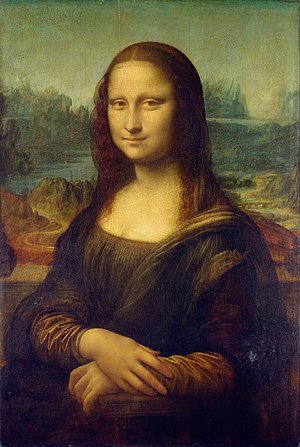The Science behind MONA LISA

Have you ever heard about the masterpiece by Leonardo Da Vinci “Mona Lisa”? It is a portrait of a woman smiling and looking at you whichever angle you’re looking at the picture.
The picture has dazed people all over the world, and people start to wonder how the brilliant genius did it.
We all know Leonardo Da Vinci is no ordinary artist. He is a well-renowned scientist that has excelled in many fields of science apart from his famous artworks.
Leonardo Da Vinci has also achieved in different areas like cartography, anatomy, geology, and studies. His designs have helped different scientist to be able to invent things like a parachute, the tank, helicopter and more.
For a scientist at his time, he was a super genius. With the help of some other scientist, he was able to create fantastic inventions like a revolving bridge, Anemometer, Aerial screw, 33-barreled organ, giant crossbow, colossus, ideal city, scuba gear, and a self-propelled cart. All these inventions made by the genius did not sway him away from making his world-class paintings. Almost all the pictures and portraits he made are hanged in different museum around the modern world. Indeed, there is none like Leonardo Da Vinci.
THE SMILE OF MONA LISA
Have you ever wondered how the beautiful smile of Mona Lisa came to be? The famous painting has inspired many love songs and art lovers all over the world by the captivating and enigmatic smile of the woman. Of course, there are many pictures of a woman smiling in the modern world, but there is something peculiar about this one. The portrait intrigued many visitors of the Louvre Museum in Paris which the picture was kept. One of the visitors was Margaret Livingstone, a scientist that studies the human visual system at Harvard Medical School. When she checked the painting a few years ago, she noticed something unusual about the picture. She said, “It was apparent to me that when I looked at her mouth, she wasn't smiling as much as when I looked at her eyes."
She later realized what was happening. She said the central vision sees fine details while the peripheral vision sees blurry images. This means when the face was blurred with a filter, Mona Lisa was smiling cheerfully, but the fine details gave the picture a demure expression.
With this painting, Leonardo Da Vinci has achieved an unusual effect. He made Mona Lisa’s smile change depending on where you look in the portrait. This is quite eccentric and one of a kind in the art world, therefore, making the Mona Lisa one of the most sought out picture in the world.
HOW DID HE DO IT
The manipulation of the Mona Lisa's smile is on a psychological and emotional level. An artist can manipulate the perception of viewers in different ways that sometimes even they don't understand. The mind of Leonardo Da Vinci is very wild and great scientific, but scientists and researchers aren’t so sure if he could have known the secret behind the Mona Lisa smile. It is because the human visual system was centuries away and the genius himself couldn't have used it in his picture. The painting was his prized possession which he later gave the King of France as a gift.
Livingstone specialty was on the spatial frequency perception within the eye. This usually means knowing how detailed the image is. Another example of a spatial frequency is right on your phone screen. The pictures on the screen are made up of pixels; therefore, the ones with higher spatial frequency are sharper and more detailed while the ones with lower spatial frequency are lower. The trick to this concept is that the different parts of the eye are tuned to the different spatial frequency. Any image you see has both low and high spatial frequency patterns, layered on the top of the other therefore showing you a different perception of the image.
MONA LISA’S EYE
.jpeg)
Mona Lisa’s smile is not the unique and peculiar feature of the painting. Mona Lisa's eye also has a very captivating character. It has a feature whereby the portraits eye appears to move as the viewer moves.
Although this feature has performed in different images before the Mona Lisa, it was later called the “Mona Lisa effect” because the effect showed an excellent production in the Mona Lisa more than any other. If one stands in front of it, the portrait looks like its staring at you, and if one moves from side to side, the stare still seems direct.
Many have tried to study the Mona Lisa to know the scientific reason for this effect. One of these reasons is that in the 3D world, shadow and light in the face shifts as the vintage changes although not possible in a 2D world. We, therefore, have the perception eyes that are staring straight out are looking at us even if we are not in front of the painting. Leonardo also has a mastery of shadows and lighting that also helped in the making of the world pronounced Mona Lisa.
The conclusion is Leonardo Da Vinci was a real genius, and he created one of the best portraits of all time. The picture was sought out throughout the world, and although He was a renowned Scientist, some people got to know him because of the mesmerizing Mona Lisa.
I hope you enjoyed the writing and thanks for visiting my blog. Upvote and follow me for more interesting articles like this.
Hope you enjoy the steem power you won from the Xemurai Giveaway :)
Yes. Thanks a lot. I really appreciate it. I think Ill be posting about it and tagging you in my next post to show my appreciation
Cool im happy it motivates you
Yea. It really did. I already posted my formal appreciation post https://steemit.com/busy/@thecappedvillain/appreciation . Thanks a lot. Cheers